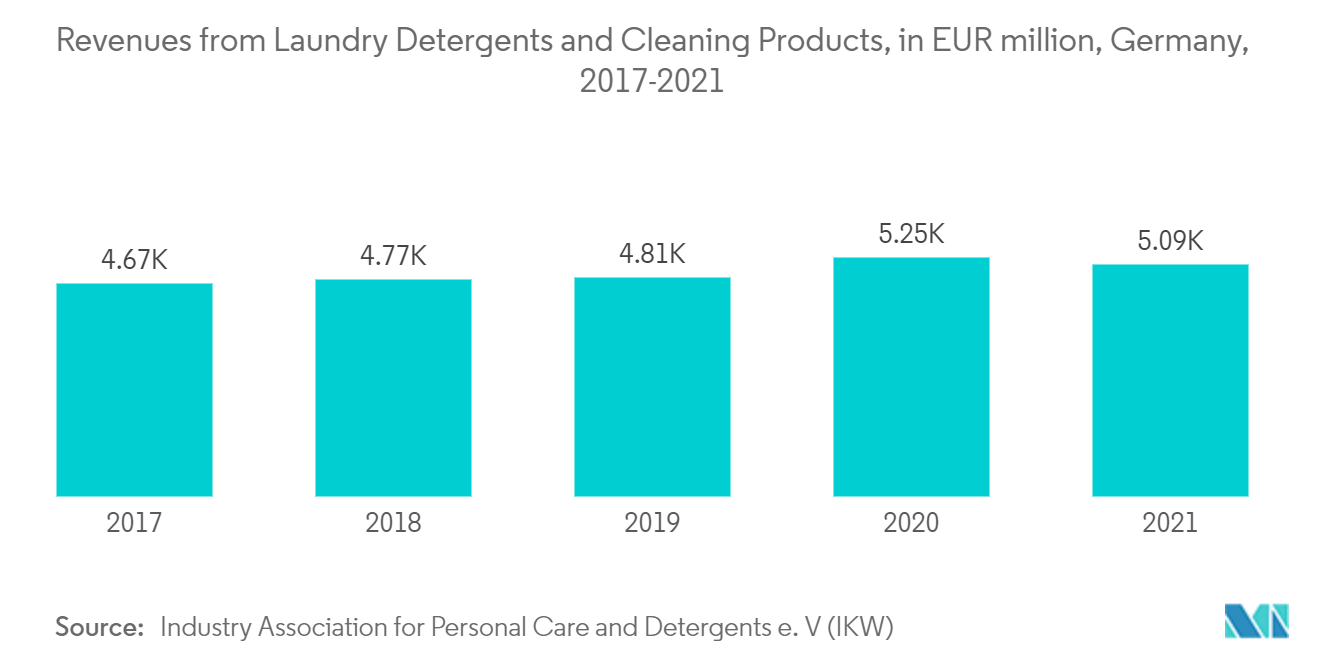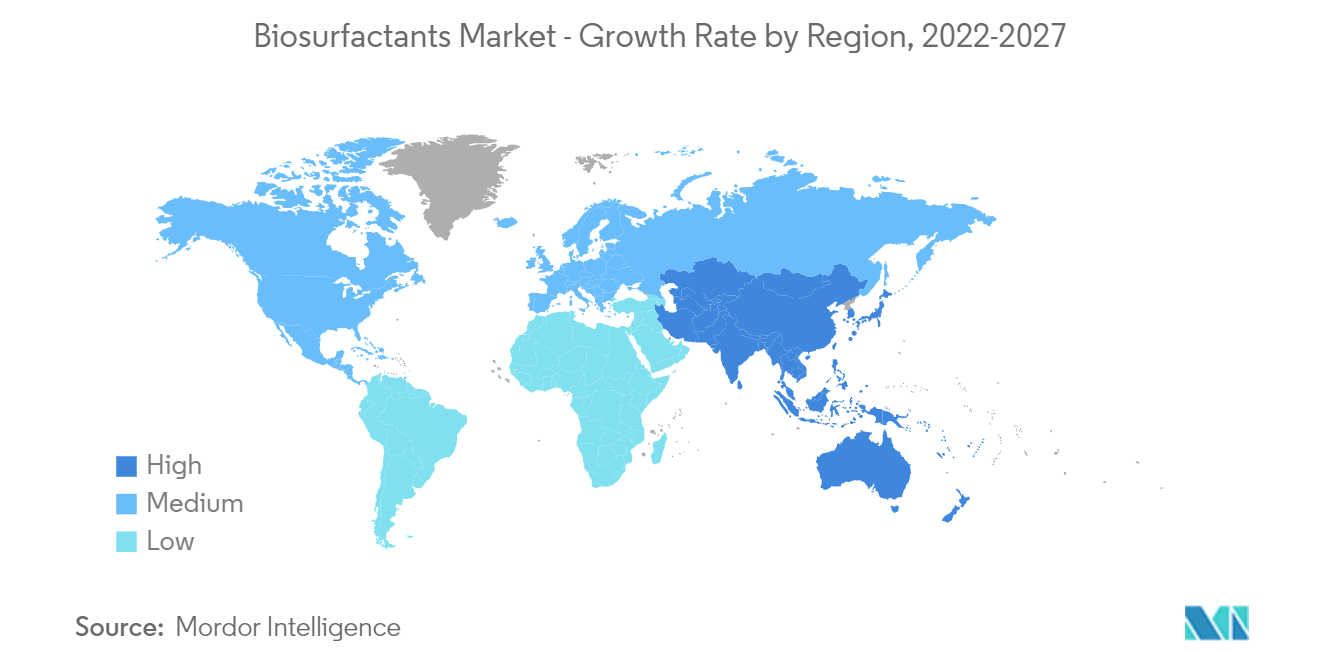Market Trends of Biosurfactants Industry
Detergents and Industrial Cleaners Segment is Expected to Dominate the Market
- Surfactants serve a critical role in the formulation of laundry and household cleaning products. Chemical surfactants, softeners, oxidizing agents, and different enzymes are among the constituents of modern detergents.
- Furthermore, surfactants are all synthetically made and pose a threat to young aquatic life. The search for eco-friendly characteristic alternatives for compound surfactants in garment cleaners has been re-energized by the growing public awareness of environmental problems and risks associated with compound surfactants.
- Biosurfactants are preferable over chemical surfactants because of their low toxicity, the endurance of temperature and pH fluctuations, and high biodegradability. Above all, they have the advantage of being able to be made from renewable resources. Biosurfactant structures, such as glycolipids, lipopeptides, and polymeric surfactants, can be generated depending on the microbe and carbon and nitrogen sources employed. The interaction with the residue may differ depending on the structure of the biosurfactant.
- Biosurfactants, such as Cyclic Lipopeptide (CLP), are stable across a wide pH range (7.0-12.0) and do not lose their surface-dynamic properties when heated to high temperatures. They demonstrate excellent emulsion creation capability with vegetable oils, as well as outstanding resemblance and strength to commercial clothes cleaners, indicating that they should be considered in a clothing cleansers strategy.
- According to the Industry Association for Personal Care and Detergents e. V (IKW), revenues from laundry detergents and cleaning products in Germany accounted for EUR 5,092 million (~USD 6,024.60 million) in 2021, compared to EUR 5,246 million (~USD 5,989.49 million) in the previous year.
- According to the Bureau of Labor Statistics, average annual expenditure on soaps and detergents per consumer unit in the United States accounted for USD 80.49 in 2021, compared to USD 75.53 in 2020.
- All such factors are likley to significantly impact the demand for the studied market.
Europe is Expected to Dominate the Market
- The European region accounted for the largest share of the regional market for biosurfactants. Owing to the presence of the largest consuming countries, such as Germany, the United Kingdom, France, and Italy, the demand for biosurfactants in the region is growing at a significant rate.
- Germany's population has increased over the years, and awareness regarding personal care and hygiene is high. Hence, the usage of soaps and detergents is high. This, in turn, is expected to increase the usage of surfactants over the forecast period.
- The output from the German chemical industry is essential in various products, which include soaps, detergents, cosmetics, etc. More than 60 manufacturers of washing, care, and cleaning agents are present in the country.
- According to the VKE - Association of Marketing Companies for Cosmetic Products e. V, year-on-year revenue development in the cosmetics industry in Germany accounted for 0.4% in 2021, compared to -9% in 2020.
- The market for the soap and detergent manufacturing industry in the United Kingdom is dynamic, and the industry is known for strong product innovation, as the manufacturers compete to retain consumer interest.
- According to the Office for National Statistics in the United Kingdom, the revenue generated through the manufacturing of soap and detergents and cleaning and polishing preparations is likely to reach about USD 6,131.81 million by 2023.
- The oil and gas industry plays a vital role in the growth of the country's economy. Although the United Kingdom is a mature petroleum province, the offshore oil industry in the country proved its resilience in the face of one of the most severe oil price downturns in recent years. The offshore oil industry in the United Kingdom is shallow-water-based, and deep-water accounts for a limited share.




